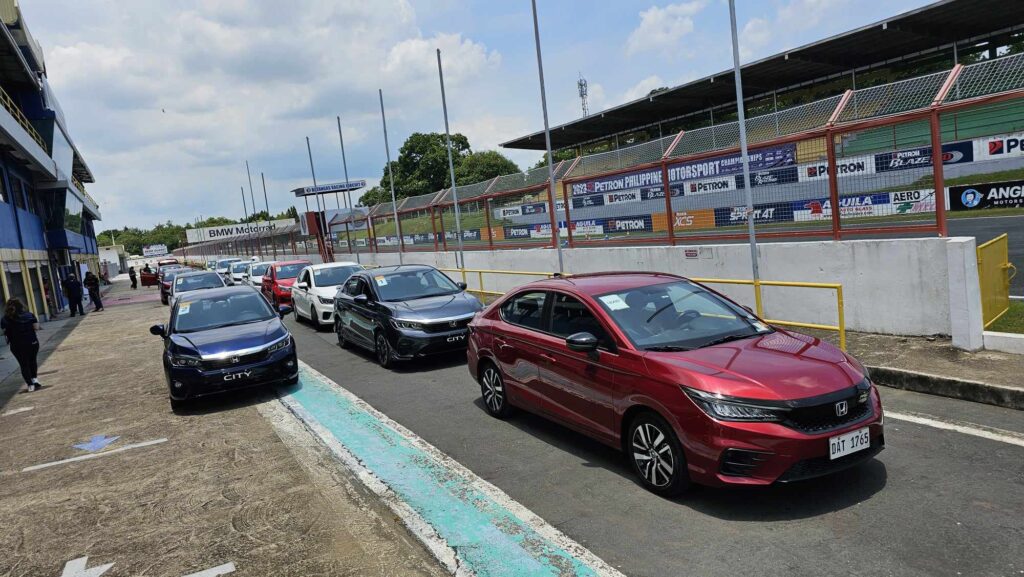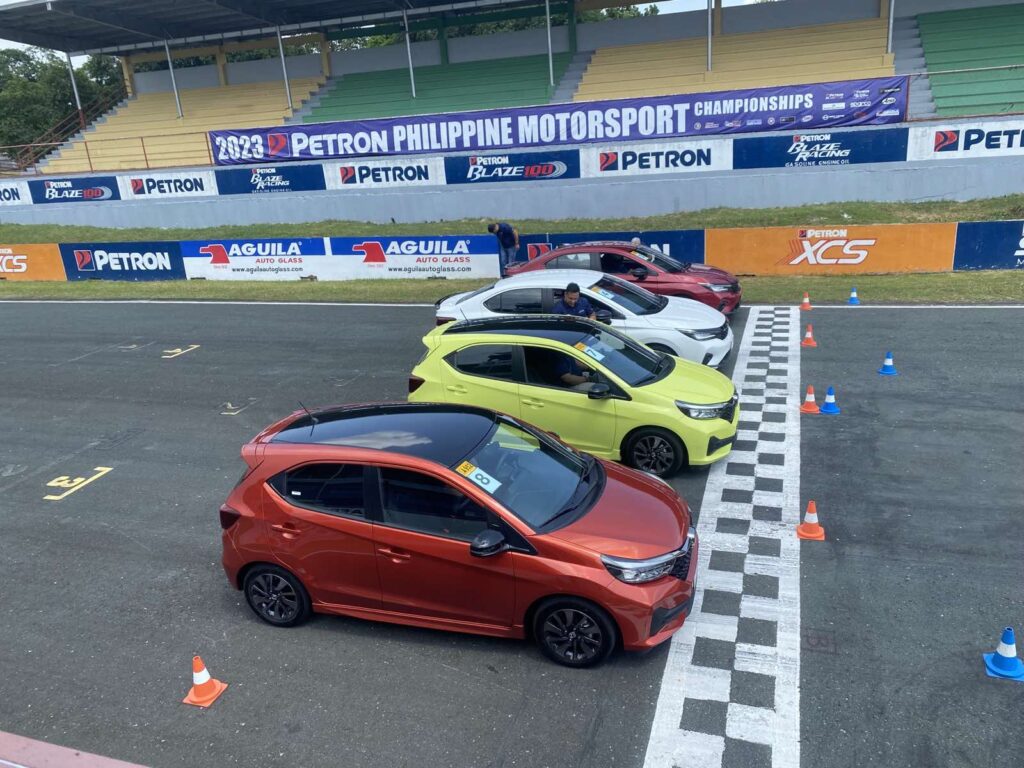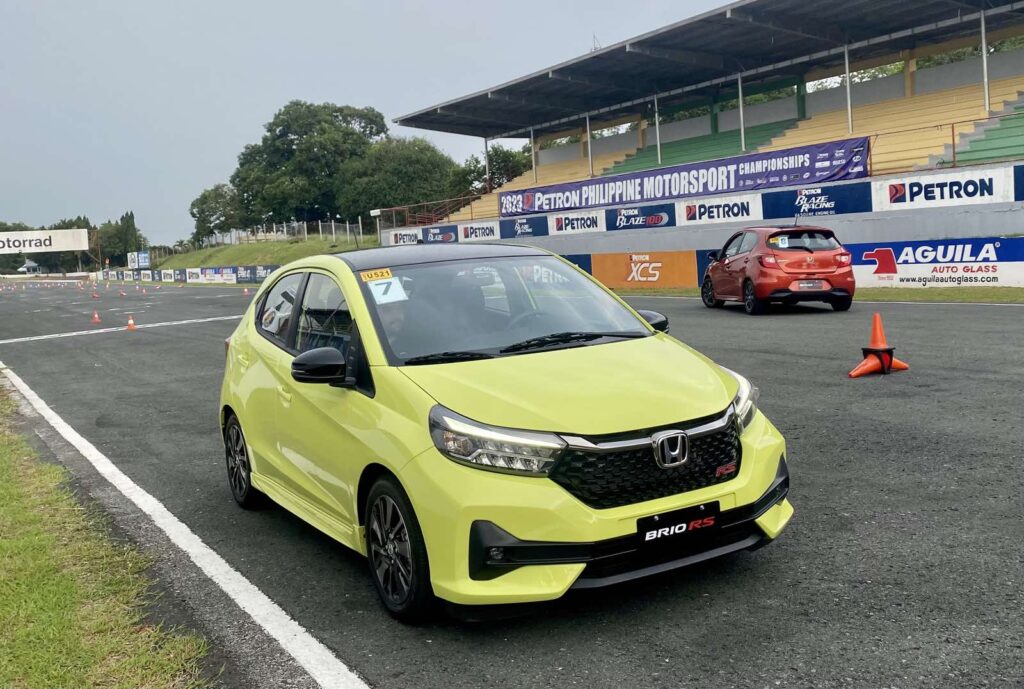Nothing is more rewarding than having your daily efforts in achieving something come into fruition. As it turns out, “planting good seeds” on scrimping fuel everyday did pay its dividends in one way or another. Aside from saving approximately P300 on a daily basis–being the designated driver–which usually consists of bringing my kids to school and bringing them back home; going to and fro automotive events within the city; and bringing my wife to her office and back again, so on and so forth, one recent event, unknowingly, or shall we say–surprisingly–recognized all my efforts.
In my own research, on average, one would spend about P500 to P800 on gas to do all these, especially if the car or driver is a gas-guzzler. But on my daily driver, a Toyota Vios, I could do all these for only P200 to P300. My secret? Eco-driving.
And one recent event at the Batangas Racing Circuit (BRC), modesty aside, further solidified this kind of mettle.

Honda City and Brio drive to Batangas
Honda Cars Philippines, Inc. (HCPI) recently organized a drive from Bonifacio Global City in Taguig all the way to the said track in Rosario, Batangas, wherein challenges were laid out. The task pitted four units each of its new Honda City and Brio.
The two-hour journey, which began with a slightly slow grind due to the morning rush hour traffic, mostly consisted of long highway driving. As usual, I was the designated driver for the team, which consisted of the newspaper’s new video content provider, Kristoffer Crisostomo and the Auto Review television crew of producer-host Ron de los Reyes and videographer, Davein Madrid.
Onboard the new Brio, we ran at average speeds of 80 to 100 kph. I was driving the top-tier 1.2 RS Black Top CVT and was able to test how this P863,000-critter felt on the long straights. The car had pretty much good balance, thanks to its superb engineering. Its In-line four-cylinder SOHC i-VTEC engine, which churns out 89hp and 109N-m of torque had to be maxed out, however, to catch up to the convoy.
Upon arriving at the BRC, we were first treated to lunch and a brief technical presentation of the two vehicles. After a sumptuous meal, we went straight to the main highlight of the day–the ontrack challenges.

Ecospeed Challenge
First was the Ecospeed Challenge. The goal of the challenge was to drive around the short course of BRC with the best possible fuel-efficiency while finishing the run within the specified time duration.
Here, out of the 20 media participants, we were grouped into 10 teams with two members each. I was then paired with Auto Review’s Davein Madrid.
To start off, I drove the Honda City RS. At first, I thought the bigger 1.5-liter L15ZB1 i-VTEC DOHC engine of the City would be harder to eke out compared to the smaller Brio. I was proven wrong.
Like what I’ve always been doing during ecorun competitions, I started slowly from the get-go. On the long straight before turn one, I feathered the gas pedal to be able to hit a decent speed of 60kph and tried to maintain this pace all the while keeping a 1,000 to 1,200rpm. To maximize the track, I even used racing lines to minimize braking. Knowledge of physics is vital as momentum and gravity are your bestfriends. This technique keeps your foot off the pedal. Also, to get the best possible result, I used “feel” to know exactly when to press the pedal and when not to.
Upon reaching the finish line, I even had to feather the brakes as to not disrupt momentum. In the end, I was able to squeeze out 26.3 kilometers per liter on the City RS model.
Next was the Honda Brio RS. Here, I applied the same old technique and was able to churn out 24.2 kilometers per liter.
As it turned out, I got the best fuel-efficiency result for both the City and Brio categories. By this time, it’s now up to Davein if we would end up standing atop the podium later on as winners were determined by combining our records.

Gymkhana Challenge
For this challenge, on the other hand, the Honda Brio RS was pitted in a makeshift gymkhana track. As in any race of this type, cones were laid out along the course. Once a cone was taken out during the entire run, a two-second penalty was automatically added to our total times. Here, we had a total of two runs, one practice, the other the official time.
Once I was behind the wheel of the Brio, I could actually feel the overall superb balance of the vehicle in every turn. In the slalom sections, most especially, its angle and feel were perfect. It was like built for this kind of stuff.
In the end of the challenge, I logged in a decent 40 seconds with one-cone penalty, good enough, for at least, top 5 among all the 20 participants.
Everyday saving pays good rewards
To cap the day off, we stayed at Palm Beach Resort in nearby Laiya. Here, winners were announced right after dinner.
To cut the story short, this writer, together with his teammate, was awarded the best duo onboard the Honda City RS at the Ecospeed Challenge.
At the back of my mind, this may just be a fun mini competition among the media. But, for me, it meant something else. This just proves that everyday saving—indeed—pays its rewards. Just imagine what this kind of deed could do in the grand scheme of things.









